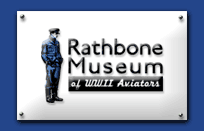









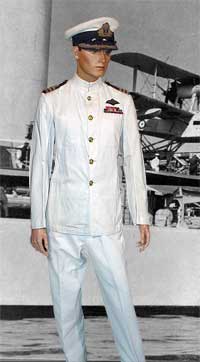
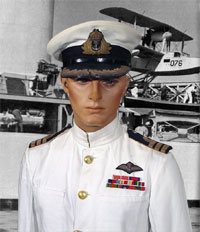

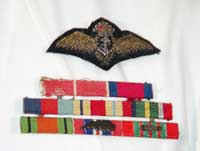

This well-traveled Commander has a number of awards for WWII. From top, left to right: Order of the British Empire, Commander (CBE), Distinguished Service Order, 1939-45 Star, North Africa Star, Pacific Star, Defense Medal, War Medal with Mention in Dispatches and the French WWII War Cross.
As a commander, this officer was entitled to wear one row of bullion on his visor cap bill. Admirals (flag rank) had two rows.
The three stripes on the board inidcate Commander rank, the first senior officer grade in the Royal Navy.
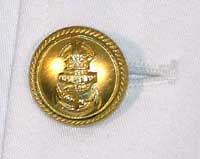
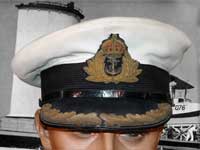
A close-up of the hat showing the nice salty bullion of the Royal Navy crest with the King's crown. The white top was a cover for the normally blue hat.
The gilt button of the Royal Navy.